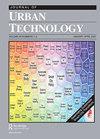结合社交媒体和基于代理的建模:支持智慧旅游规划的新方法
IF 4.4
3区 经济学
Q1 URBAN STUDIES
引用次数: 6
摘要
考虑游客的各种需求、偏好和行为模式对于改进智能旅游规划至关重要。本文提出了一种将社交媒体与基于agent的模型(ABM)相结合的方法来分析游客偏好并模拟游客决策。提出的方法首先利用社交媒体提取有关游客类型和游客偏好的知识。这些知识,连同由问卷数据补充的知识,用于开发模拟旅游活动的ABM。该方法在中国枣林湾公园的规划中得到了应用。案例研究表明,社交媒体的结合可以为丰富潜在客户的旅游偏好提供机会,并且游客运动的建模可以揭示对旅游功能至关重要的基础设施(如道路和小巷)和服务设施(如食品,购物和住宿)的规划。虽然本研究的重点是旅游规划,但所提出的方法可以应用于社区和城市层面的其他基础设施和服务规划情景。本文章由计算机程序翻译,如有差异,请以英文原文为准。
Coupling Social Media and Agent-Based Modelling: A Novel Approach for Supporting Smart Tourism Planning
ABSTRACT Accounting for tourists’ various needs, preferences, and behavioral patterns is critical for improved smart tourism planning. This paper presents a novel approach that integrates social media and agent-based modelling (ABM) to analyze tourist preference and simulate tourist decision-making. The proposed approach first uses social media to extract knowledge about tourist typologies and tourist preferences. The knowledge, together with that supplemented by questionnaire data, is used for developing an ABM that simulates tourist movements. The approach is applied for the planning of Zaolinwan Park in China. The case study suggests that the incorporation of social media could provide opportunities for an enriched understanding of tourist preference of potential customers and that the modelling of tourist movements can shed light on the planning of infrastructure (e.g., roads and alleys) and service facilities (e.g., food, shopping, and accommodation), which are essential to the functioning of tourism. While this study focuses on tourism planning, the presented method could be applied to other infrastructure and service planning scenarios at community and urban levels.
求助全文
通过发布文献求助,成功后即可免费获取论文全文。
去求助
来源期刊

Journal of Urban Technology
URBAN STUDIES-
CiteScore
8.50
自引率
4.20%
发文量
42
期刊介绍:
The Journal of Urban Technology publishes articles that review and analyze developments in urban technologies as well as articles that study the history and the political, economic, environmental, social, esthetic, and ethical effects of those technologies. The goal of the journal is, through education and discussion, to maximize the positive and minimize the adverse effects of technology on cities. The journal"s mission is to open a conversation between specialists and non-specialists (or among practitioners of different specialities) and is designed for both scholars and a general audience whose businesses, occupations, professions, or studies require that they become aware of the effects of new technologies on urban environments.
 求助内容:
求助内容: 应助结果提醒方式:
应助结果提醒方式:


